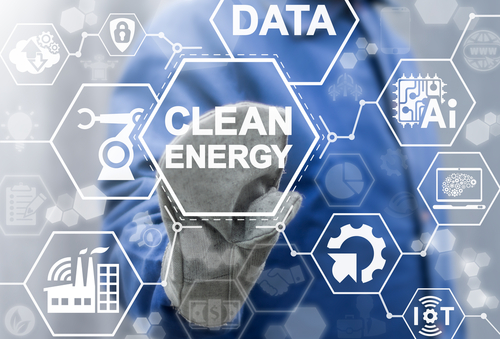NARUC white paper examines role of nuclear energy in clean energy future

The National Association of Regulatory Utility Commissioners (NARUC) recently issued a white paper that examines the role of nuclear energy as a keystone clean energy resource.
The paper, entitled Nuclear Energy as a Keystone Clean Energy Resource, not only nuclear energy’s role in providing carbon-free electricity; it also highlights key considerations for regulators to keep in mind as decarbonization efforts continue across many states and utilities. The paper was authored for the NARUC Center for Partnerships and Innovation by Energy Ventures Analysis (EVA).
Nuclear energy has been the single largest source of zero-carbon energy in the U.S. since the first commercial nuclear reactors began operating in December 1957. In 2021, nuclear energy accounted for approximately 20 percent of total U.S. electric generation and almost half of its carbon-free electricity.
In its analysis, EVA found that retaining and expanding the nuclear energy resource base will be critically important to achieve ambitious state and national decarbonization goals. However, barriers to a faster and more significant deployment of new nuclear energy resources persist, including economic pressures, planned retirements, and competition from other resources. The paper reviews the state of the nuclear industry and the impacts of planned retirements and identifies opportunities for decision makers to support future nuclear expansion efforts.
“Nuclear energy needs to be part of the conversation as states, communities, Tribal Nations, and utilities across the country work to meet clean energy goals and tackle climate change without decreasing access to energy,” Dr. Kathryn Huff, assistant secretary for Nuclear Energy, U.S. Department of Energy, said. “This report provides a framework for decision makers to start those conversations.”
Along with the white paper, NARUC developed a webinar that details key takeaways and offers insights into future work.
“States play a vital role in moving the ball forward on advanced nuclear technology deployment. Ensuring that state energy regulators understand the opportunities that nuclear can help to unlock, as well as the challenges in deploying this technology effectively, is essential to ensure that nuclear continues to support grid reliability and carbon reduction goals,” Commissioner Anthony O’Donnell of Maryland, co-chair of the DOE-NARUC Nuclear Energy Partnership and chair of the NARUC Subcommittee on Nuclear Issues – Waste Disposal, said.
The report was developed as part of the DOE-NARUC Nuclear Energy Partnership (NEP), established in 2021 with support from the U.S. DOE Office of Nuclear Energy. NEP seeks to provide opportunities for state public service commissions to better understand barriers and opportunities related to the U.S. nuclear fleet.
“Nuclear energy is more important than ever for America because traditional fossil plants are closing, putting reliability in jeopardy,” Commissioner Tim Echols of Georgia, co-chair of the Nuclear Energy Partnership and vice chair of the NARUC Subcommittee on Nuclear Issues – Waste Disposal, said. “With the rise of electric vehicles and a growing electric load, carbon-free nuclear power generation becomes critical in helping our country and states meet our climate goals.”
